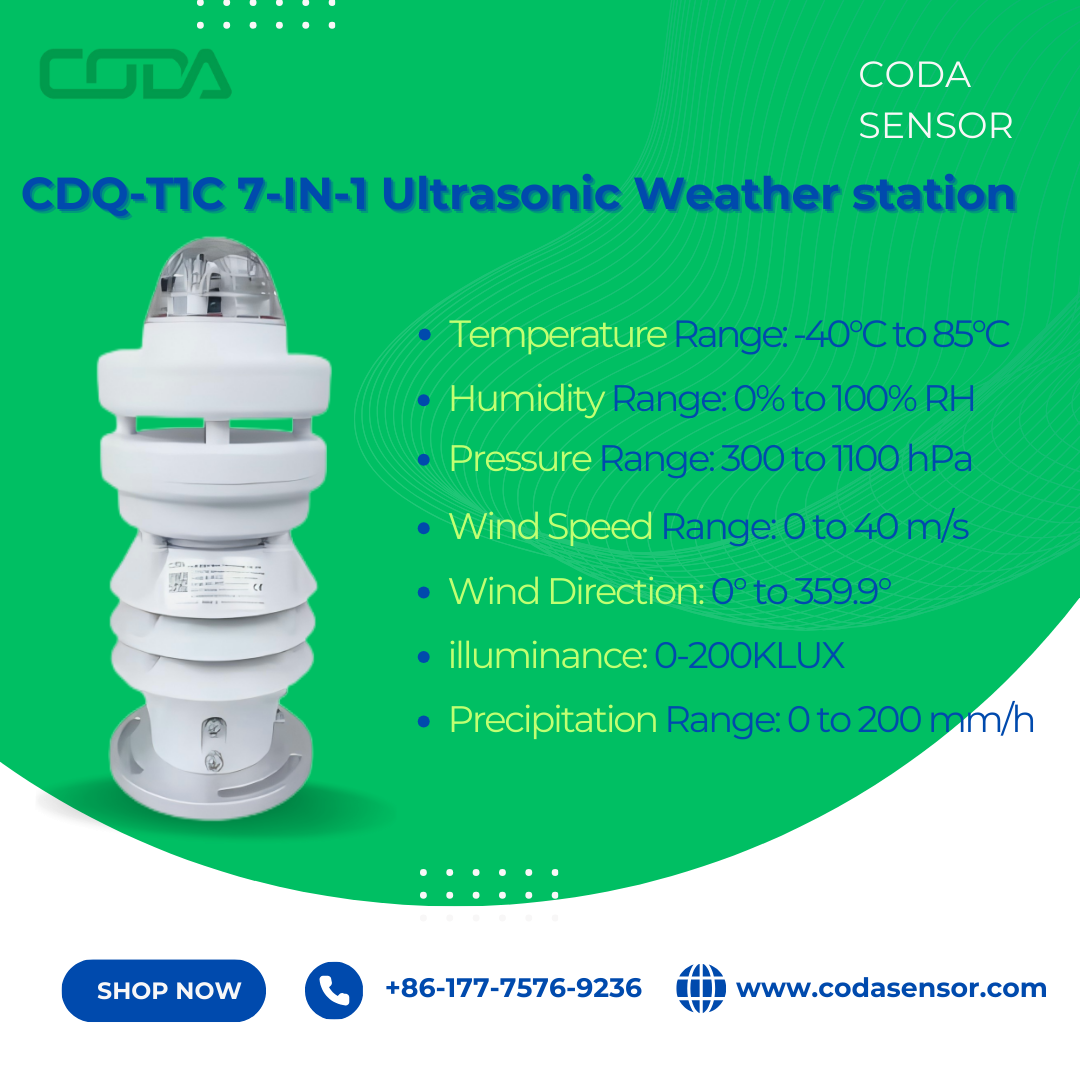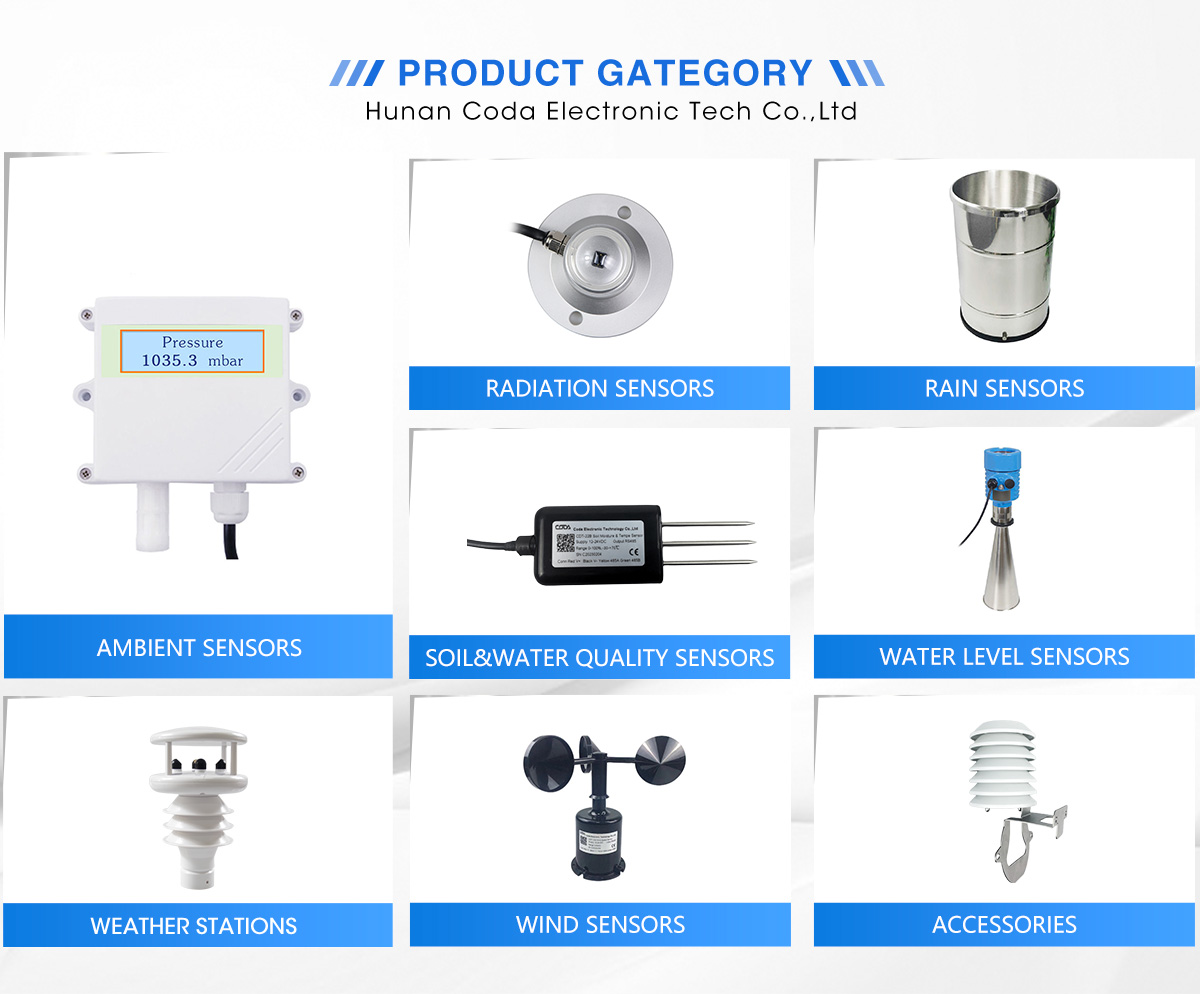In the era of smart technology and the Internet of Things (IoT), weather monitoring has evolved significantly. The use of advanced communication technologies has changed how we collect and analyze weather data.
These technologies include GPRS, WiFi, and 4G. They work together with ultrasonic sensors. One such innovation is the Automatic Ultrasonic Wind Weather Station Sensor, equipped with capabilities to measure air temperature, humidity, and solar radiation.
This device is a game-changer for industries, researchers, and people who care about the environment. It provides accurate and real-time weather data.

An Automatic Ultrasonic Wind Weather Station Sensor is a sophisticated device designed to measure various environmental parameters without the need for moving mechanical parts. Unlike traditional anemometers, ultrasonic sensors work differently.
Traditional anemometers use spinning cups to measure wind speed. In contrast, ultrasonic sensors use sound waves to determine both wind speed and direction. This makes them more durable, reliable, and maintenance-free, especially in harsh weather conditions.
The device is equipped with multiple sensors to measure:
Wind Speed and Direction: It uses ultrasonic technology to measure wind speed. It does this by timing how long sound waves take to travel between sensors. Wind direction is determined by analyzing the phase shift of the ultrasonic signals.
Air Temperature: A built-in temperature sensor provides accurate ambient temperature readings.
Humidity: A hygrometer measures the relative humidity in the air.
Solar Radiation: A pyranometer or solar radiation sensor quantifies the amount of solar energy received from the sun.
Key Features of the Device
Multi-Communication Capabilities:
GPRS: Allows data transmission over cellular networks, making it ideal for remote locations where internet connectivity is limited.
WiFi: Enables seamless integration with local networks for real-time data access and sharing.
4G: Provides high-speed data transmission, ensuring that large volumes of data can be sent quickly and reliably.
Automatic Data Logging:
The device can automatically log data at predefined intervals, ensuring a continuous and comprehensive record of weather conditions. This feature is particularly useful for long-term environmental studies and trend analysis.
Solar-Powered Operation:
Many models come with solar panels, making them energy-efficient and suitable for deployment in off-grid locations. The solar panels charge built-in batteries, ensuring uninterrupted operation even during cloudy days.
Durability and Low Maintenance:
The ultrasonic wind sensor has no moving parts. This reduces wear and tear. As a result, the device is very durable and needs little maintenance.
Real-Time Data Access:
With GPRS, WiFi, and 4G, users can get real-time weather data from anywhere. They can use smartphones, tablets, or computers. This is particularly beneficial for industries like agriculture, aviation, and renewable energy, where timely weather information is critical.
Compact and Portable Design:
The weather station is small and easy to install. This makes it good for many uses, from small farms to big industrial sites.

Agriculture:
Farmers can use the device to monitor weather conditions and make informed decisions about irrigation, planting, and harvesting. Accurate data on temperature, humidity, and solar radiation helps optimize crop yields and reduce resource wastage.
Renewable Energy:
In wind and solar energy projects, the weather station gives important data. This data helps with site assessment, performance monitoring, and predictive maintenance. For example, wind speed and direction data are essential for optimizing the placement and operation of wind turbines.
Aviation and Maritime:
Accurate weather data is crucial for safe flight and navigation. The device can be set up at airports, helipads, and ports. It gives real-time updates on wind, temperature, and humidity.
Environmental Research:
Researchers studying climate change, microclimates, and ecosystems can gain from the accurate data from the weather station. The ability to monitor solar radiation is particularly useful for studying the impact of sunlight on various environmental processes.
Construction and Infrastructure:
Weather conditions can significantly impact construction projects. The device helps project managers plan activities, ensure worker safety, and protect materials from adverse weather.
Higher Accuracy:
Ultrasonic sensors give more accurate wind speed and direction readings than mechanical anemometers. Mechanical anemometers can be affected by friction and wear.
No Moving Parts:
The lack of mechanical components reduces the risk of failure and extends the lifespan of the device.
Remote Monitoring:
GPRS, WiFi, and 4G work together for remote monitoring and control. This means you do not need to be there in person.
Energy Efficiency:
Solar-powered operation ensures that the device can function in remote areas without access to electricity.
The GPRS, WiFi, and 4G Automatic Ultrasonic Wind Weather Station Sensor monitors air temperature, humidity, and solar radiation. It is a modern solution for weather monitoring needs. Its combination of advanced ultrasonic technology, multi-communication capabilities, and comprehensive environmental sensing makes it an indispensable tool for a wide range of applications.
Whether you are a farmer, researcher, or industry expert, this device gives you reliable, real-time data. This data helps you make better decisions and improve your operations. As technology keeps advancing, these innovations will be important for a smarter and more sustainable future.
Discover how water level sensors reduce labor co
Learn how CODA Sensor solar radiation and PAR se
Discover how real-time weather station data impr
Contact: Molly
Phone: +86-17775769236
Tel: 86-0731-85117089
Email: molly@codasensor.com
Add: Building S5, Aux Square, Yuelu District, Changsha City, Hunan Province, China
We chat